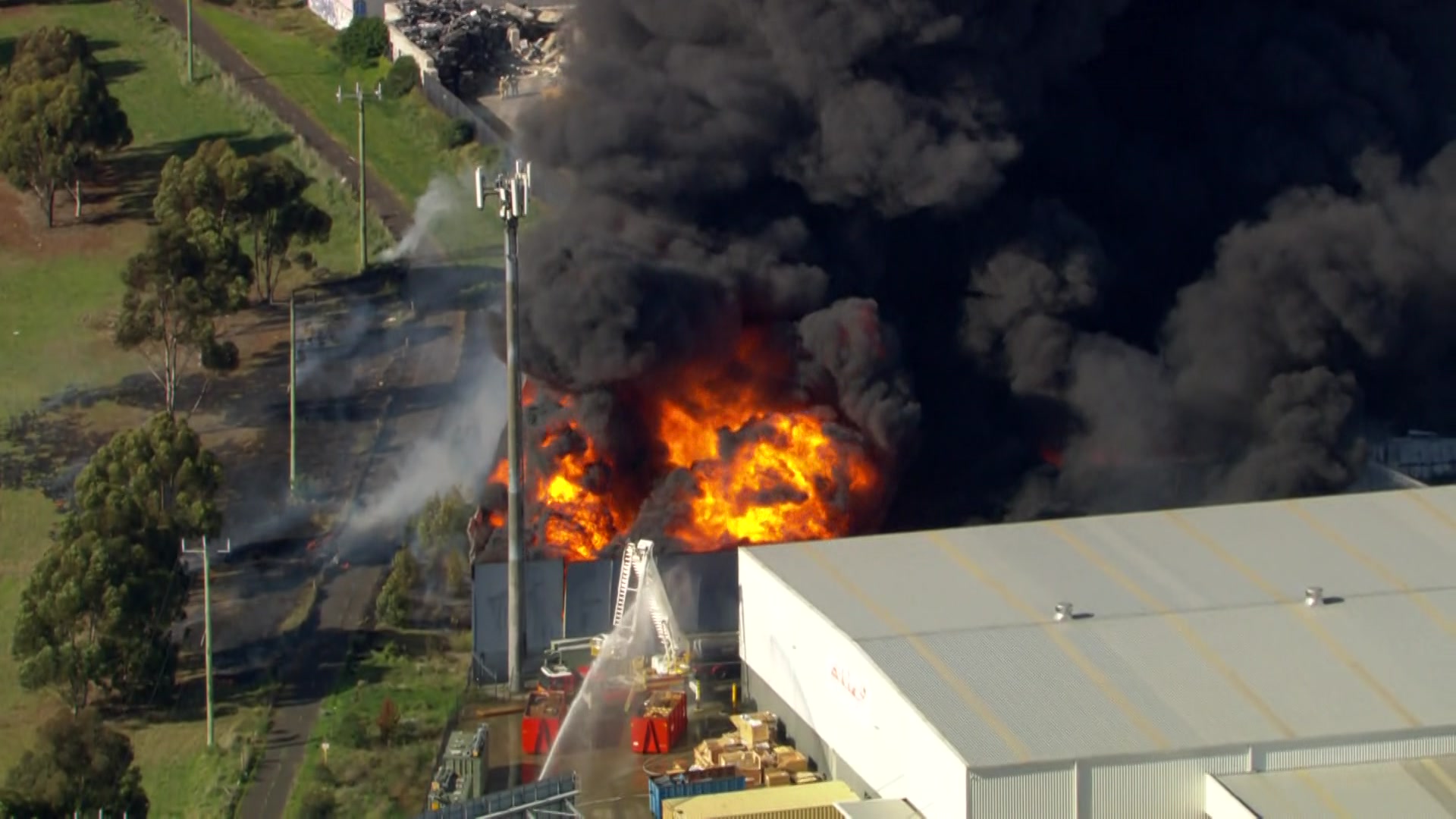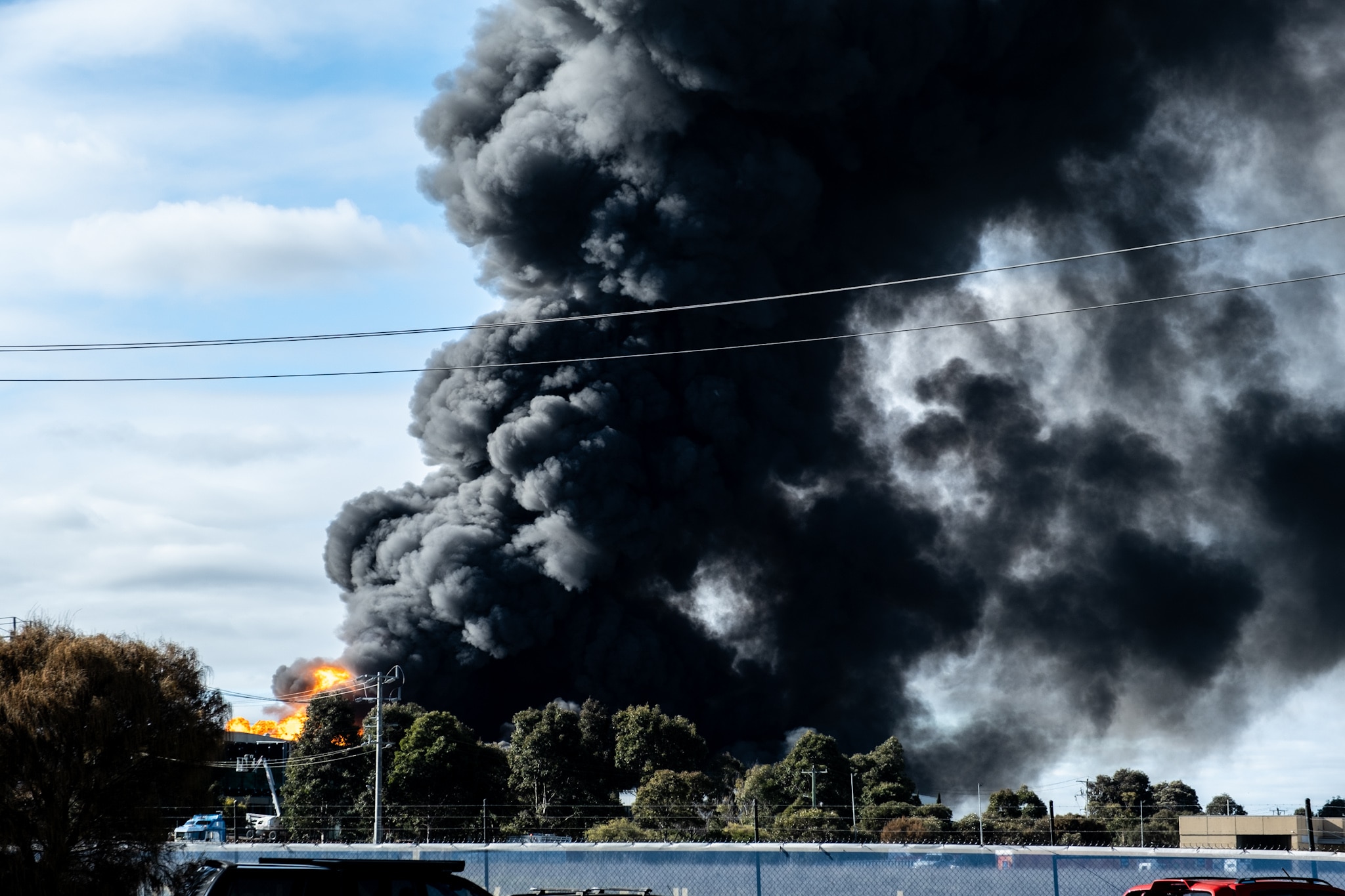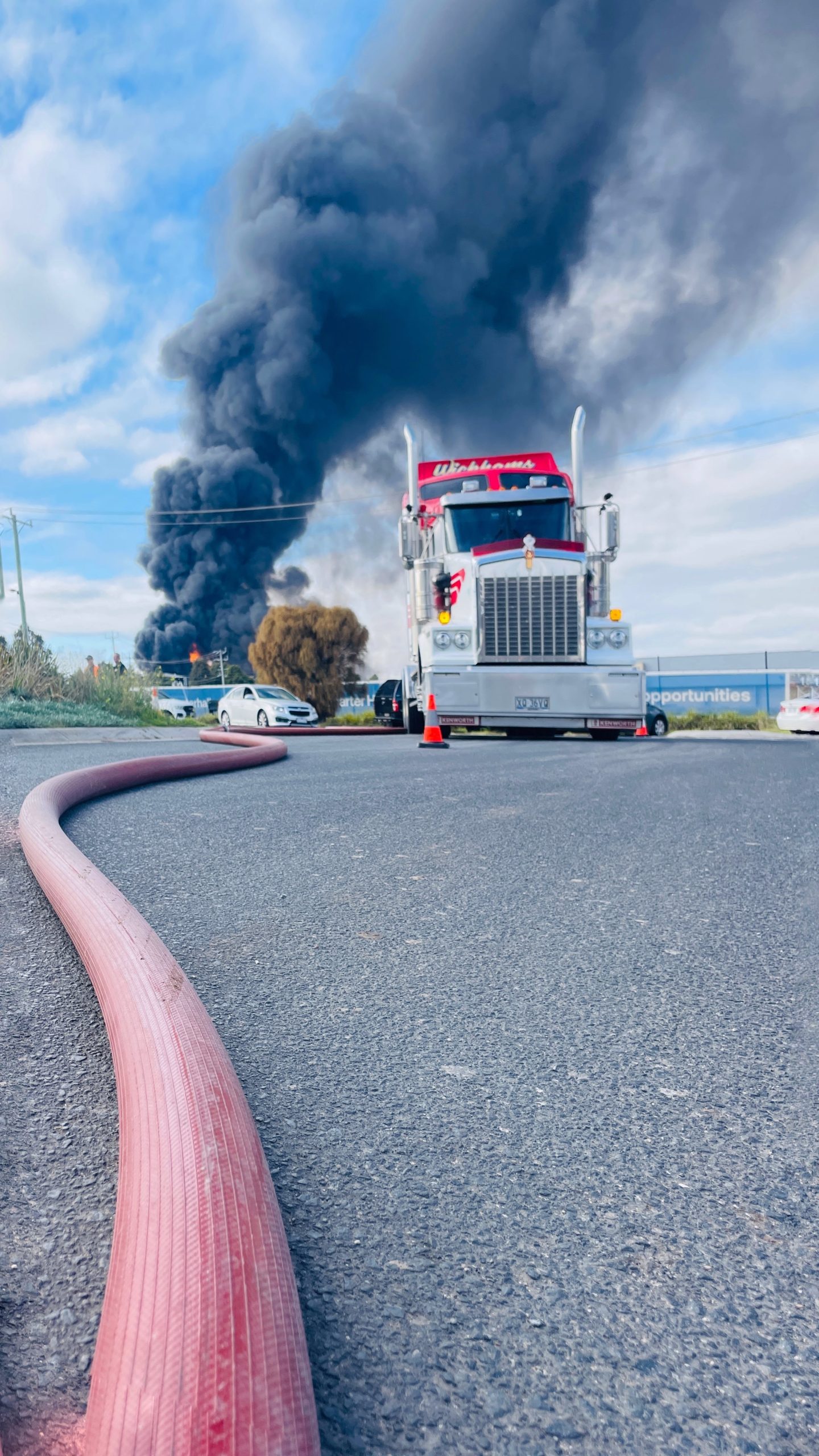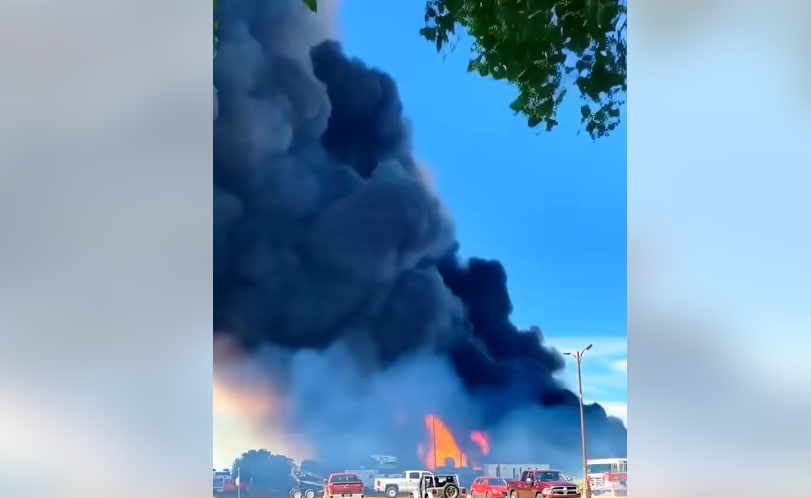Melbourne Factory Fire Triggers Major Emergency Response and Environmental Concern
This week, a significant industrial fire erupted at a factory complex located in Derrimut, one of Melbourne’s western suburbs, sending a towering column of thick black smoke billowing into the sky. This incident has not only highlighted the potential dangers associated with industrial facilities but has also raised serious questions regarding environmental safety and community health. As the fire burned fiercely, it became one of the most extensive firefighting operations seen in Victoria in recent years, with authorities indicating that the clean-up and thorough investigation could span several weeks. The ramifications of this fire will likely be felt in the community for a long time to come, as residents grapple with both the immediate impacts and potential long-term consequences.
The Blaze: Details and Initial Response
The alarm was raised late Wednesday morning when the fire ignited at a manufacturing facility on Swann Drive, an area bustling with warehouses, transport depots, and distribution centers. Fire Rescue Victoria (FRV) quickly reported that the blaze was fueled by multiple chemical storage drums within the factory, leading to intense bursts of heat and flying debris. According to Deputy Commissioner Michelle Cowling, firefighters received the first calls about the rapidly expanding flames just after 11 a.m., and soon after, thick smoke was reported stretching for kilometers. The visible impact of the fire was felt not just in Derrimut, but across a wide area, raising alarms in several nearby suburbs.

“This was an aggressive fire requiring a large-scale response,” Cowling explained, emphasizing the challenges faced by the firefighting teams. The sheer scale of the fire prompted a mobilization of over 180 firefighters, supported by a fleet of fire trucks, aerial units, and other emergency personnel. Crews from both FRV and the Country Fire Authority (CFA) worked tirelessly under extreme conditions. The firefighters battled the flames through the afternoon, utilizing both ground and aerial firefighting techniques. By mid-afternoon, authorities confirmed that the fire was officially “under control,” although smaller hotspots would continue to smolder for days. “This is not something that will be resolved overnight,” Cowling remarked, assuring the community that firefighters would maintain a presence at the site until all risks were eliminated.
Evacuations and Traffic Disruptions
In light of the unfolding crisis, evacuations were conducted in the immediate vicinity of the factory to ensure public safety. Major thoroughfares, including parts of the Western Freeway, were closed, leading to significant delays for commuters during the busy afternoon hours. Local power outages further complicated the situation, disrupting traffic signals and exacerbating congestion. As residents received emergency alerts, many were left scrambling to find alternative routes home. By the evening, some roads were reopened, but police urged residents and drivers to stay clear of the area to allow emergency services unimpeded access. The logistical challenges faced by the authorities illustrate the complexity of managing emergencies in densely populated and industrial areas.

Dramatic Eyewitness Accounts
Witnesses described harrowing scenes as barrels and containers within the warehouse overheated and exploded into the air. Trent Chamberlain, who works three kilometers away, stated, “Every few minutes, there was another burst that shot high into the sky. It was surreal watching this unfold; the smoke was thick and heavy — it was impossible to miss.” Residents reported seeing the dark plume even from distances as far as St Kilda, which is over 20 kilometers from the site of the fire. The dramatic nature of the events left many feeling both frightened and powerless, as they observed the scene from a distance, questioning the safety of the surrounding area.
No Injuries Reported Amidst Chaos
Despite the alarming scale of the fire and the hazardous materials involved, authorities confirmed that there were no injuries among factory workers, nearby residents, or emergency responders. Ambulance Victoria stated that paramedics were on standby throughout the emergency but did not transport anyone for treatment. “This is a positive outcome considering the risks our teams faced,” Cowling noted, adding that all personnel were accounted for and that no firefighters sustained serious injuries. This fortunate outcome is a testament to the training and preparedness of the emergency services, as well as the efficient evacuation protocols in place.

Environmental Concerns and Public Health
As smoke spread across Melbourne’s western suburbs, the Environment Protection Authority (EPA) issued warnings advising residents to stay indoors, close windows, and turn off heating and cooling systems that could draw in outside air. The plume of smoke posed potential risks not only in terms of visibility but also air quality, raising alarms for those with respiratory issues. Monitoring units were deployed to assess air quality, and although the smoke was expected to dissipate as wind conditions changed, those with respiratory sensitivities were urged to take precautions. The incident underscores the pressing concerns about the link between industrial safety and public health, particularly in urban settings where populations are dense.
Community Impact and Safety Measures
The fire has raised significant concerns among community groups, particularly since the facility is known to store large quantities of hazardous chemicals, including kerosene and ethanol. The ACB Group, the owner of the factory, has a history of fire-related incidents, and their lack of immediate comment in the aftermath has left residents anxious and unsettled. Local community organizations and environmental advocates have started to mobilize, calling for transparency and accountability. Authorities have emphasized the need to keep the public safe, reiterating that access to the area should be limited until the situation is fully resolved. “We ask that people stay away from the area,” Cowling reiterated, “as these are hazardous conditions.” The community’s response reflects the growing demand for stringent safety measures in industrial operations.

Environmental Monitoring and Future Implications
Beyond firefighting efforts, attention has turned to potential environmental consequences. The EPA is closely collaborating with Melbourne Water to contain any contaminated runoff that may threaten local waterways. This aspect of the incident is critical, as runoff from chemical fires can have devastating effects on ecosystems. Efforts include deploying trucks and pumps to capture excess water and using sandbags to manage runoff. “Right now, we are focused on limiting the impact on local creeks,” an EPA spokesperson stated, indicating that monitoring efforts would persist for an extended period. The ongoing environmental assessment will be essential in determining the full scope of the damage and necessary remediation efforts.
Investigative Measures and Long-Term Recovery
Investigators will be permitted to enter the site once it is deemed safe, although the cause of the fire remains under scrutiny. Preliminary assessments suggest that the fire was not deliberately ignited, which brings a level of relief but does not eliminate the need for caution. Cowling assured that a comprehensive investigation will be undertaken, involving both fire and safety experts. WorkSafe Victoria is also expected to examine the incident in light of its regulatory oversight of industrial safety. The findings from this investigation will likely influence future safety regulations and emergency response protocols.
A Call for Enhanced Safety Regulations
As Melbourne grapples with the aftermath of this significant industrial fire, the community is reminded of the inherent risks associated with chemical storage facilities. This incident has reignited discussions surrounding the need for stricter safety measures and regulatory compliance to safeguard both environmental integrity and community health. The Derrimut blaze serves as a critical reminder of the ongoing challenges in balancing industrial growth with environmental protection. Stakeholders from various sectors, including local government, environmental organizations, and industry representatives, are now faced with the challenge of working collaboratively to enhance safety standards that protect not only the community but also the environment for future generations.

















